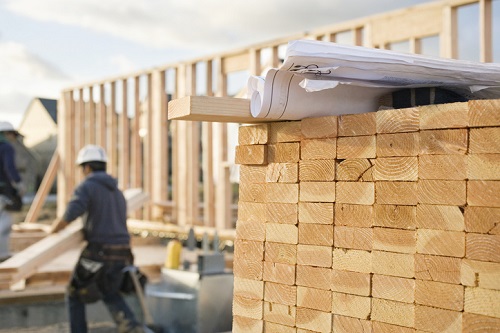Know Your Timber Types and Terminology
Reading time: 5 minutes
Which timbers are considered hardwoods?
Hardwoods generally refer to wood that is sourced from broad-leaved trees. They are often stronger, thicker and more durable when compared to softwoods (which we will come onto later).
Common hardwood types
-
Ash – ideal for internal use including handles for tools, sports equipment and joinery.
-
Meranti – the most common of hardwoods, often used for doors, skirting boards and flooring.
-
American White Oak – should only be used internally for mouldings such as architraves as it doesn’t react well in wet conditions.
-
European Oak – can be used internally and externally for doors, windows and other building projects.
The cost of hardwood tends to be more than softwood because it grows very slowly and needs a longer drying time, however its longevity makes up for this.
What is meant by softwood timber?
Softwood timber is wood produced by coniferous trees. Softwood tends to be lighter, more flexible and less expensive when compared to hardwoods. Ideal for indoor and outdoor applications, softwoods can be used for roofing, doors and windows.
Common softwood types
Softwoods are generally the easiest to work with out of the timber types, and have a wider range of uses. If you’re conscious of your carbon footprint, softwoods are an extremely renewable source due to their quicker growth when compared to hardwoods.
-
Pine - a very popular softwood, due to its strength and versatility. Pine can be used in a number of applications, from furniture to flooring and roofing.
-
European Redwood – used for internal and external building works, the appearance can vary due to the conditions it grows in.
-
Larch – a favourite among architects as it’s durable and suitable for external use such as timber cladding.
-
Western Red Cedar – very adaptable so can be used for projects from wooden decking boards to indoor furniture.
-
Douglas Fir – the strongest softwood type, ideal for internal and external joinery applications such as flooring.
CLS timber
Canadian Lumber Standard (CLS) timber is mainly sourced in the UK from Scandinavian or European softwoods. The use of CLS has grown over the years and is often used for timber framing and constructing internal stud walls.
CLS is an easy to use and quality type of timber that can be bought already kiln-dried, treated and planed with smooth, rounded edges. These properties make it a reliable choice for a range of building projects.
Timber sizing
Timber can be purchased in many forms including planed and sawn timber. Sawn wood is wood in its rough, natural state, often used for building structures where the surface will be hidden.
Standard lengths of sawn wood can range from 1.8m to 6m, so depending on your project, it’s always a good idea to buy timber slightly longer than you need in case of any damage.
When buying planed timber, the sizes displayed are often nominal sizes. These are not the same as the finished size that has been levelled and smoothed. For example, when buying 2x4 timber, the nominal size is 2x4 inches, but the actual size will normally be 38mm x 89 mm (1 ½ x 3 ½ inches).
Timber terminology
Timber terminology can be a tricky thing to get your head around, even as an experienced tradesperson. We’ll focus on the most common terms found in the UK:
- C16 and C24 timber – ‘C’ refers to ‘Conifer’ and the number is a rating of the timber’s strength. C24 is stronger than C16 however, C16 is the most used in the UK
-
Dimensional timber – wood that is the correct finished size
-
Finished size – the size that the timber is machined to finish at. Usually shown in millimetres
-
Hardwood – wood from broad-leaved trees, not from a conifer
-
Nominal dimensions – the size before the wood has been planed, this may not match the dimensions stated on the product
-
PSE/planed square edge – the edges of the wood are square and it has a smooth, planed finish on all sides
-
Rough sawn timber – sawn to roughly the correct size and will have a rough finish
-
Softwood – timber from a conifer tree
- Treated – wood that has been treated with chemicals to preserve its strength and appearance
We hope this has helped you understand the types of timber available. For more information, visit our timber news & advice hub. Or why not visit one of our branches offering their specialist timber services for your next project.
Disclaimer: The information contained on this page is intended as an overall introduction and is not intended as specific advice from a qualified professional. Travis Perkins aims to avoid, but accepts no liability, in the case that any information stated is out of date.





